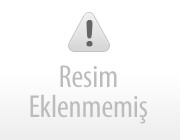Learn Price Action Trading from a Seasoned Pro Analyst
| Modul | Genişlik | Derinlik | Yükseklik |
They are most useful during long-term trends for reasserting that a trend is ongoing. Leading indicators, on the other hand, attempt to predict future price movements and are often used to signal potential entry and exit points before the trends have fully formed. To trade reversals effectively, confirm them with subsequent price action or indicators, as premature entries can result in losses. Look for patterns like head and shoulders, double tops/bottoms, or pin bar formations for reversal signals. Identifying breakouts and reversals is fundamental in price action trading. These patterns signal potential entry points or warn of trend exhaustion, offering invaluable insights into market sentiment.
In price action trading, candlestick patterns are essential tools that can give you insights into market sentiment and potential reversals. They visually represent price movements within a specific timeframe, helping you make informed decisions. To develop a successful price action trading strategy, you need to begin by understanding the historical price movements of your chosen market. Analyze past price patterns, volumes, and trends to identify potential trading opportunities. Practice with a demo account to refine your strategy without financial risk.
Head and Shoulders and Double Tops
No representation or warranty is given as to the accuracy or completeness of this information. Consequently any person acting on it does so entirely at their own risk. Any research provided does not have regard to the specific investment objectives, financial situation and needs of any specific person who may receive it.
Candlestick Patterns
Many institutions have begun leveraging algorithms to analyze prior price action and execute trades in certain circumstances. In a 2020 report to Congress, the Securities and Exchange Commission (SEC) noted that the “use of algorithms in trading is pervasive.” Candlestick patterns such as the Harami cross, engulfing pattern, and three white soldiers are all examples of visually interpreted price action. Changing them is not recommended unless you are an experienced trader. Typically, the double-top pattern confirmation comes when the price falls below the trough level between the two peaks, suggesting a potential sell-off may occur. Volatility refers to the degree of variation in the price of a trading instrument over some time.
The Candlestick Pattern Indicator is installed in the same way as the MTF, see above. This information has been prepared by IG, a trading name of IG Markets Limited. IG accepts no responsibility for any use that may be made of these comments and for any consequences that result.
This can be done with patterns such as the head and shoulders or the double top and bottom. The double top is a chart pattern used to describe when the price of a market drops, rebounds and then drops from the same level creating a double top. Price action trading offers straightforward yet effective strategies for traders. Along with finding these patterns it will also give you high probability entry, stop loss and exit signals.
- A neckline can be drawn by connecting the low points of the two troughs on either side of the head.
- The useful thing about this indicator is that it will draw the support and resistance levels on your charts that have not yet been touched.
- To illustrate a series of inside bars after a breakout, please take a look at the following intraday chart of NIO.
- These patterns can give you insights into market sentiment and potential future price behavior.
- Changing them is not recommended unless you are an experienced trader.
Navigating the world of trading can be daunting, especially when choosing…
What is Price Action Trading? Complete Guide With PDF Download
Spotting these patterns early can give you a competitive advantage. Price action trading is an effective trading approach where traders make decisions based on the movement of prices shown on charts, without relying on complex indicators. It focuses solely on price history and doesn’t consider external factors. Price charts reflect the collective behavior of traders in the market. For example, if the price suddenly moves up, price action charts clearly show this and indicate that buyers are in control. While price action trading is simplistic in nature, there are various disciplines.
Triangles and Range Patterns
- In general, Price Action Dashboard is a good helper in PA trading with a user-friendly interface.
- Bullish price action is an indicator giving positive signals that a security’s price is due for future increases.
- Bottom line, you shouldn’t expect stocks to all of a sudden double or triple the size of their previous swings.
- If you have not yet decided on the choice of broker, then see our Forex brokers rating .
- Spotting these patterns early can give you a competitive advantage.
- It contains three peaks—the middle peak (head) being the highest and the two other peaks (shoulders) on either side being lower.
Head and Shoulders is a pattern that predicts a reversal of a prior trend. It contains three peaks—the middle peak (head) being the highest and the two other peaks (shoulders) on either side being price action indicator lower. A neckline can be drawn by connecting the low points of the two troughs on either side of the head. The pattern completes when the price action breaks through the neckline, indicating a potential sell signal.
Let’s review a few head fake examples to get a feel for what we are up against in terms of false setups. With this in mind, in lieu of a technical indicator, one helpful tool you can use is time. Between the quants and smart money, false setups show up everywhere.
Price action vs indicators vs technical analysis: what is the difference?
The setup consists of a major gap up or down in the morning, followed by a significant push, which then retreats. A spring occurs when a stock tests the low of a trading range, only to quickly come back into the range and kick off a new trend. Therefore, it’s not just about finding an outside candlestick and placing a trade. As you can see in the above chart of NIO, it’s best to find an outside day after a major break of a trend. In the NIO example, there was an uptrend for almost 3 hours on a 5-minute chart prior to the start of the breakdown. Flat markets are the ones where you can lose the most money as well.
Best Indicators for Gold Trading
Technical traders use price action to gather insight into the price movement of a security. Price and volume are analyzed on charts to determine the buying and selling activity of the security, informing trading decisions. Like many technical analysis tools, price action should be utilized with other tools to make overall trading decisions. The CPI indicator displays the names of candlestick patterns in Russian and indicates the direction of the transaction. If the model is trading in both directions, then it will indicate both arrows – up and down. You should remember that the CPI indicator does not take trading decisions for you, but helps you determine which model the candle combinations belong to.
We’ve also put together a short video to help with some of the advanced concepts we discuss. Should a security’s price be moving upward while the volume increases, this means there is strong conviction in the market as many investors are buying at the increasing price. Alternatively, should there have been low volume, the price action may not be as convincing as not many investors are choosing to invest at the current pricing levels. Price action is often depicted graphically in the form of a bar chart or line chart. There are two general factors to consider when analyzing price action.


